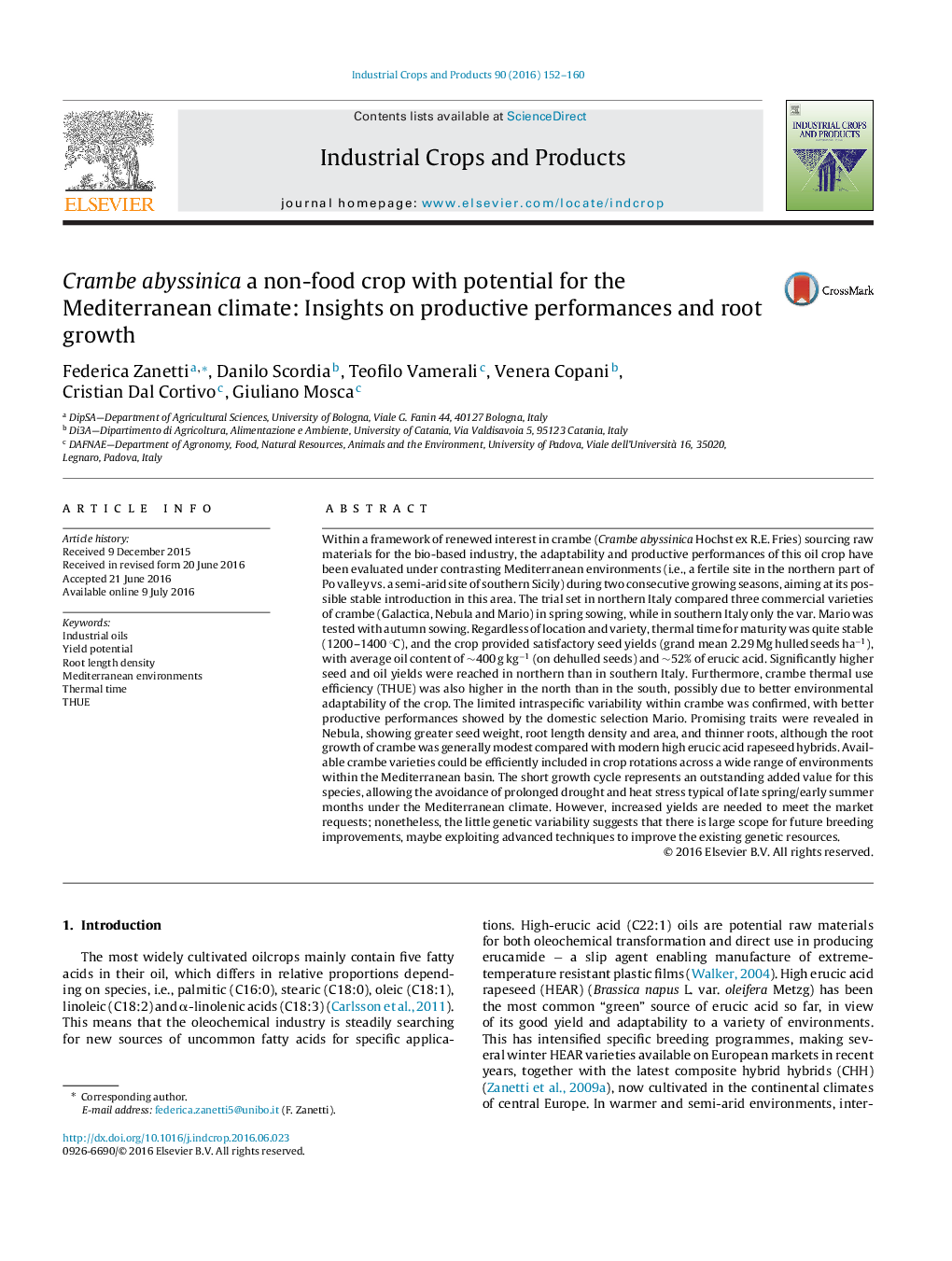| کد مقاله | کد نشریه | سال انتشار | مقاله انگلیسی | نسخه تمام متن |
|---|---|---|---|---|
| 4512102 | 1624820 | 2016 | 9 صفحه PDF | دانلود رایگان |

• A limited number of commercial crambe varieties has been available for several years.
• Crambe cultivation can be successfully extended to different Mediterranean climates by adapting the agronomic management.
• Seed and oil production of crambe significantly varied across locations.
• Improvements in root growth are probably necessary for further yield increases.
Within a framework of renewed interest in crambe (Crambe abyssinica Hochst ex R.E. Fries) sourcing raw materials for the bio-based industry, the adaptability and productive performances of this oil crop have been evaluated under contrasting Mediterranean environments (i.e., a fertile site in the northern part of Po valley vs. a semi-arid site of southern Sicily) during two consecutive growing seasons, aiming at its possible stable introduction in this area. The trial set in northern Italy compared three commercial varieties of crambe (Galactica, Nebula and Mario) in spring sowing, while in southern Italy only the var. Mario was tested with autumn sowing. Regardless of location and variety, thermal time for maturity was quite stable (1200–1400 °C), and the crop provided satisfactory seed yields (grand mean 2.29 Mg hulled seeds ha−1), with average oil content of ∼400 g kg−1 (on dehulled seeds) and ∼52% of erucic acid. Significantly higher seed and oil yields were reached in northern than in southern Italy. Furthermore, crambe thermal use efficiency (THUE) was also higher in the north than in the south, possibly due to better environmental adaptability of the crop. The limited intraspecific variability within crambe was confirmed, with better productive performances showed by the domestic selection Mario. Promising traits were revealed in Nebula, showing greater seed weight, root length density and area, and thinner roots, although the root growth of crambe was generally modest compared with modern high erucic acid rapeseed hybrids. Available crambe varieties could be efficiently included in crop rotations across a wide range of environments within the Mediterranean basin. The short growth cycle represents an outstanding added value for this species, allowing the avoidance of prolonged drought and heat stress typical of late spring/early summer months under the Mediterranean climate. However, increased yields are needed to meet the market requests; nonetheless, the little genetic variability suggests that there is large scope for future breeding improvements, maybe exploiting advanced techniques to improve the existing genetic resources.
Journal: Industrial Crops and Products - Volume 90, 15 November 2016, Pages 152–160